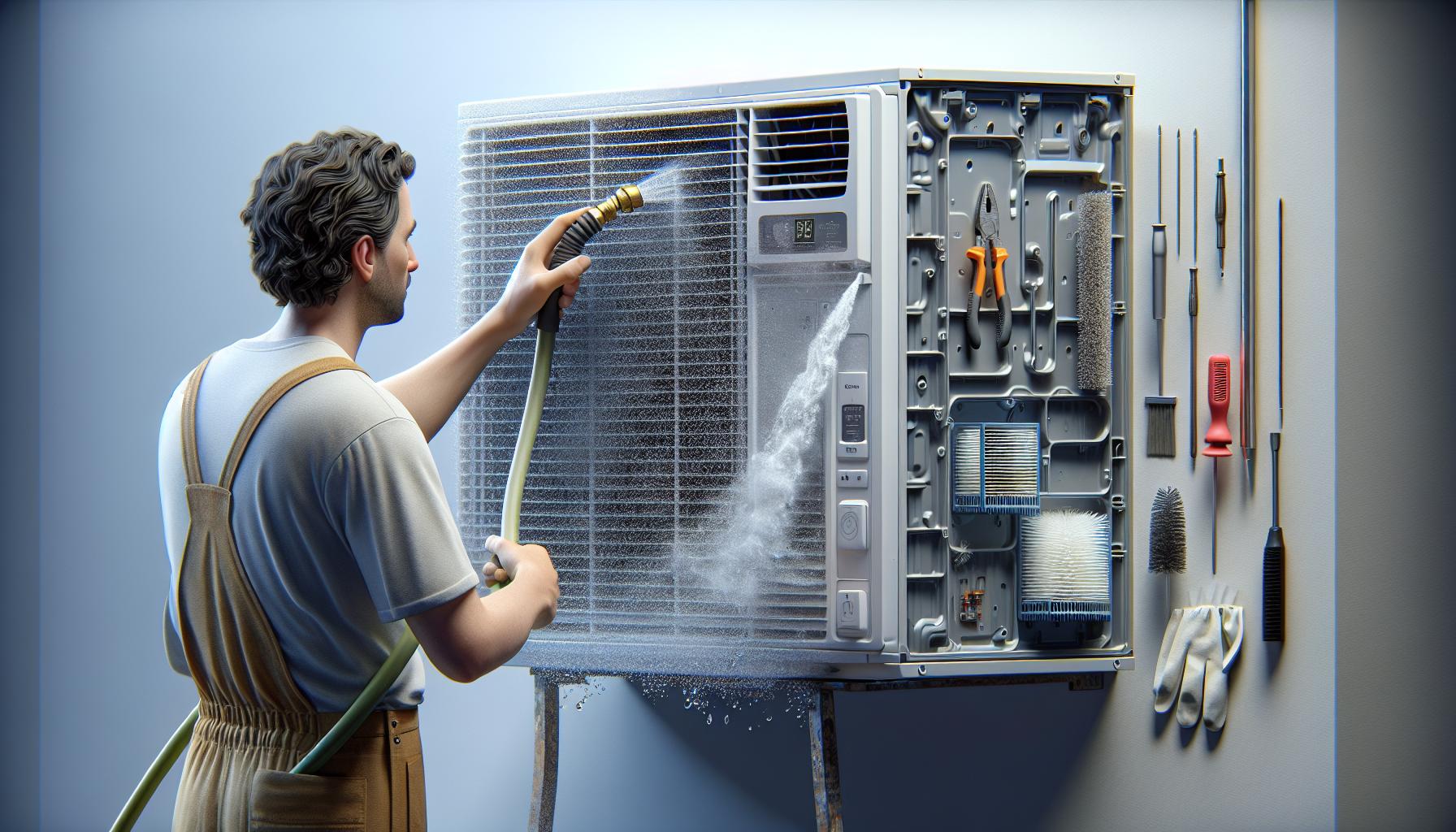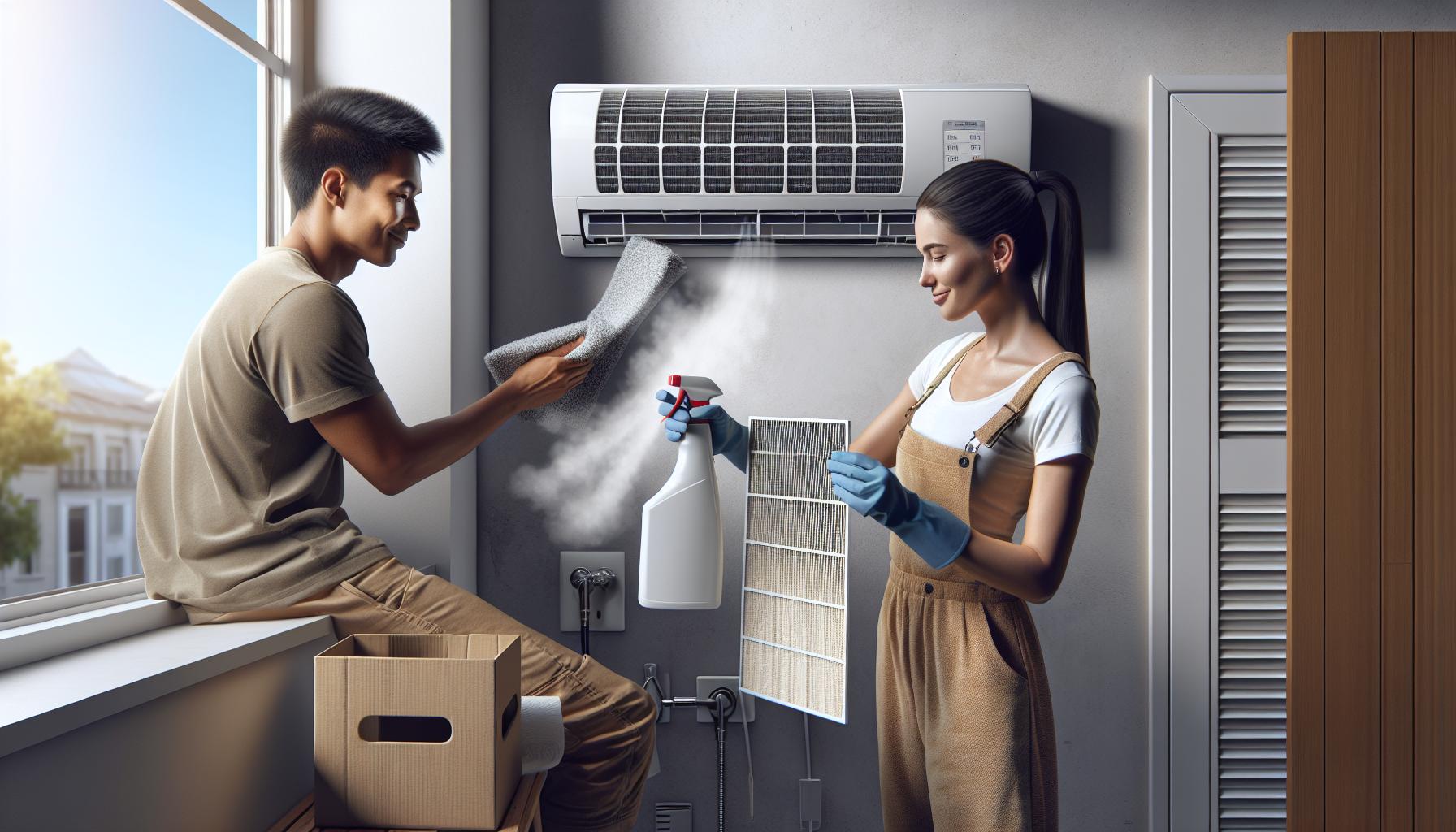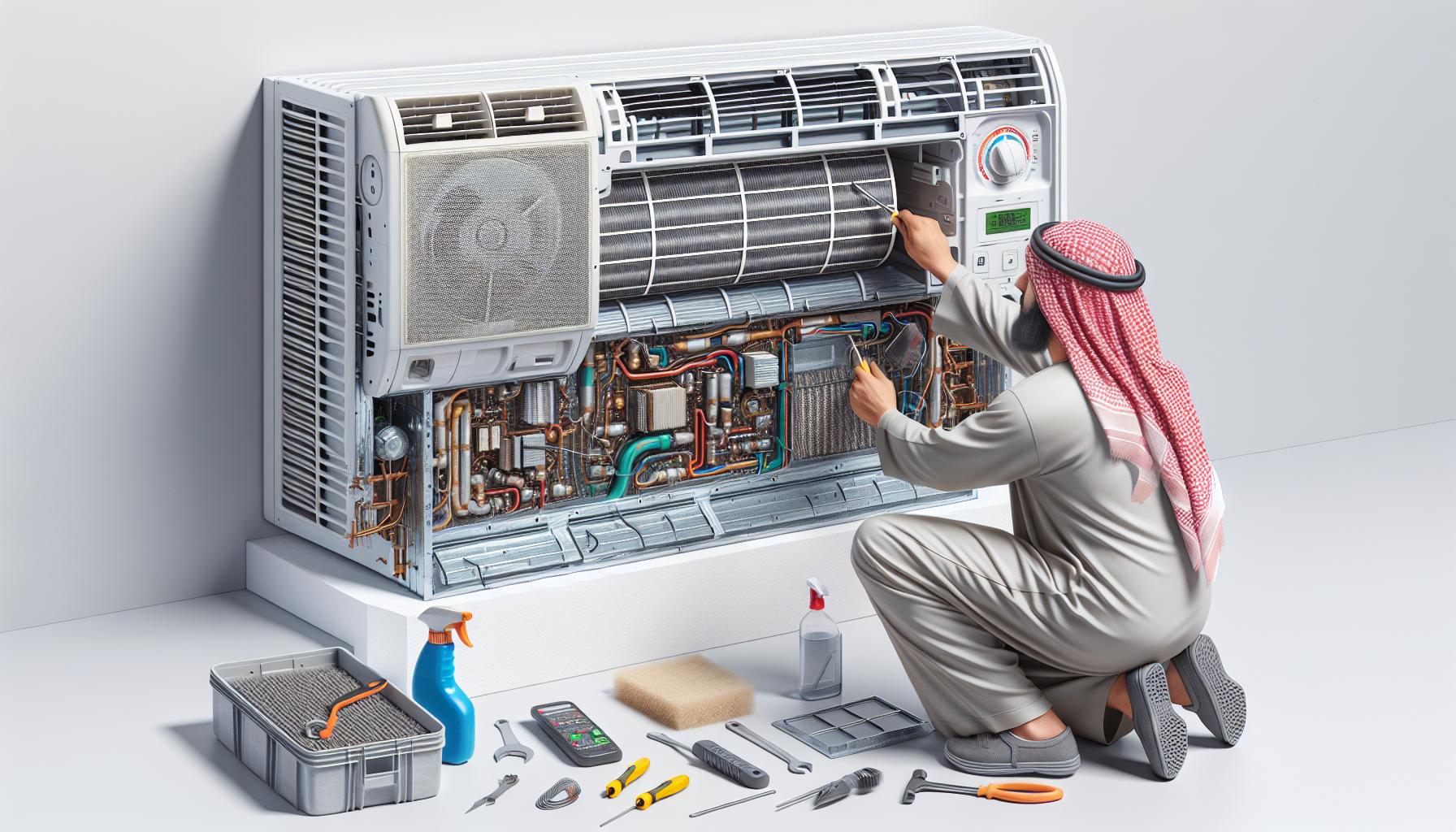When you’re out on the road in your RV, a functioning water heater is essential for comfort. But what happens when you flick the switch and nothing happens? Troubleshooting a non-responsive RV water heater switch can seem daunting, but it’s a common issue many travellers face.
Common Issues with RV Water Heaters
When you encounter a non-working RV water heater switch, it’s essential to pinpoint the issue. Water heaters in RVs can face several recognizable problems that hinder their performance.
Faulty Heating Elements
One of the most common issues is a faulty heating element. Over time, these elements can burn out, similar to those in residential units.
- Insufficient hot water
- Inconsistent water temperatures
Tripped Circuit Breaker or Blown Fuse
Electrical issues could be at play, such as a tripped circuit breaker or a blown fuse.
- Check your RV’s electrical panel
- Reset the breaker or replace the fuse if necessary
Malfunctioning Thermostat
A malfunctioning thermostat can also lead to heating inconsistencies.
- Water too hot or too cold
- Heater fails to turn on
Gas Supply Problems
For propane-powered heaters, gas supply problems are a common culprit.
- Ensure the propane tank is full
- Check for kinks or leaks in the hose
Corroded or Loose Wiring
Corroded or loose wiring can interfere with the switch’s operation.
- Inspect and tighten connections
- Look for signs of wear or corrosion
Regular maintenance and prompt attention to these issues will help keep your water heater functional and reliable. Identifying and rectifying these common problems will ensure you enjoy consistent hot water throughout your travels.
Understanding the Water Heater Switch
When you’re troubleshooting your RV’s water heater, grasping the function of the water heater switch is crucial. Essentially, this switch is the control hub for starting the heating process. Unlike switches in your home which typically power lights or devices directly, the RV water heater switch works by activating a series of actions that eventually lead to the water being heated.
The switch itself connects to the heater’s thermostat and, for gas-powered units, it may also initiate the flow of propane and spark the igniter. In electric models, flipping the switch will lead to the heating element being energized. Here are some common points of failure that are directly related to the switch:
- Faulty switches: Over time, switches can wear out, resulting in intermittent or complete loss of function.
- Wiring issues: Loose or corroded wires can impede the signal from reaching the water heater correctly.
- Tripped safety features: Built-in safety devices can trip, requiring a reset before operation can continue.
Identifying where the problem lies starts with understanding that the switch is but a part of a larger system. If you find that the switch isn’t effectively activating the water heater, it’s important to check these related components for faults. Remember that working with electrical systems can be dangerous and it’s often best left to qualified technicians.
Beyond the switch and its direct wiring, other aspects of your water heater can impact its functionality. These include the thermostat settings, the condition of the heating element, and the quality of the gas supply in propane systems. Regular inspections and maintenance are your best defence against unexpected switch-related issues and the inconvenience of cold water in your RV.
Troubleshooting Steps for a Non-Working Water Heater Switch
When you find that your RV water heater switch isn’t functioning, it’s crucial to proceed methodically to identify and resolve the issue. Here’s a tailored guide to troubleshoot effectively.
Firstly, verify power supply to your RV water heater. Check if the circuit breakers are in the “on” position and inspect any associated fuses. A blown fuse or tripped breaker is a simple fix: replace the fuse or reset the breaker.
Next, explore the condition of the switch itself.
- Look for signs of physical damage or corrosion.
- Test the switch with a multimeter to ensure it’s receiving power and functioning correctly.
If the switch is defective, replacing it is your best bet. However, investigate wiring connections too, as these can become loose or corroded over time. Secure any loose connections and clean off corrosion with a solution designed for electrical contacts.
Examine the thermostat. Improper settings or a malfunction can prevent the switch from activating the heating process. Adjust the thermostat as needed, or test it with a multimeter and replace if faulty.
Consider the heating element in electric models or the propane supply and igniter in gas-powered units.
- For electric heaters, ensure the heating element is intact and replace it if it’s burnt out.
- In gas heaters, check the gas supply lines for blockages and verify that the igniter is producing a spark.
Lastly, reflect on the overall maintenance history of your water heater. Regular servicing of all components, including cleaning and inspections, can prevent future switch issues. Address any identified problems promptly to maintain a reliably warm water supply in your RV.
Checking the Power Supply
When your RV water heater switch isn’t working, your first step is always to check the power supply. Begin by making sure your RV is connected to a power source. If you’re plugged into an external supply, verify that the circuit breaker hasn’t tripped and that no fuses have blown. For this, you’ll need to locate your RV’s electrical panel, which is typically hidden behind a panel or door.
In the event that you’re not connected to an external power source, ensure that your batteries are charged and properly functioning. A weak battery might not provide enough power for the water heater switch to operate correctly.
Inspect the Power Cable leading to the water heater. Any signs of wear, tear or damage could indicate why the switch isn’t working. If the cable is damaged, it’s crucial to replace it immediately to prevent any potential safety hazards.
Using a voltmeter, you can quickly determine if power is reaching the water heater. Place the voltmeter leads on the input terminals of the water heater to check for voltage. You’re looking for a reading that matches your RV’s expected voltage—either 120V for electric heaters or 12V if it’s powered by your RV batteries.
If your water heater runs on propane but also uses electricity for the ignition system, make sure that both the propane supply is on and that electricity is reaching the ignition system. A disruption in either could prevent your water heater from functioning.
Remember to exercise caution when dealing with electrical components in your RV. If you’re uncomfortable or unsure about checking the power supply yourself, it’s wise to consult a professional. Safety comes first, and a professional can identify and rectify issues without risk.
Inspecting the Wiring Connections
When you’re facing issues with your RV water heater switch, it’s crucial to inspect the wiring connections. Faulty or loose wiring can often be the culprit behind malfunctioning switches. Begin by turning off all power sources to avoid any risk of electric shock. With the power safely off, remove the access panel to the water heater switch.
Visual Inspection: Look for obvious signs of damage or wear on the wires. Keep an eye out for:
- Burnt marks
- Corroded connectors
- Frayed or exposed wire insulation
If you spot any of these issues, it’s a clear indication that the wiring requires attention.
Testing Continuity: Using a multimeter, test each wire for continuity. This helps ensure that there are no breaks in the wiring that could interrupt the flow of electricity. Connect the multimeter probes to the ends of each wire. A continuous circuit will give a reading, while a broken wire will not.
Re-tightening Connections: Over time, vibrations from travel can loosen the connections at the switch and the water heater. Use a screwdriver to tighten any terminal screws, ensuring a solid electrical contact.
If you find any damaged wires or connectors, they’ll need to be replaced. Always use high-quality replacement parts that match the original specifications. After securing all connections, restore power and test the switch to see if the issue has been resolved.
Throughout this process, if you feel unsure or if the repairs seem beyond your scope, don’t hesitate to contact a certified professional to handle the more intricate electrical work within your RV.
Testing the Switch for Fault
If you’ve ensured your RV’s water heater’s power supply is intact and the wiring connections are secure, it’s time to test the switch itself. The switch is a common culprit for water heater woes, and diagnosing its condition is a critical step.
First, you’ll want to locate the switch. It’s usually found inside your RV, and may be accompanied by an indicator light. Sometimes, this light can mislead you into thinking the switch is functional. The truth is, the light can be on, but the switch could still be faulty.
Testing With a Multimeter
To test the switch:
- Turn off the power to your water heater to avoid any electrical risks.
- Remove the switch from its housing. You’ll typically find screws that need to be undone.
- Set your multimeter to the continuity setting. This function is designed to test if an electric current can flow through the switch.
- Touch one probe to one terminal of the switch and the second probe to the other terminal.
- Activate the switch as though you’re turning on your water heater.
If the multimeter does not register continuity when the switch is activated, you’ve identified the problem—the switch is defective and needs to be replaced.
Voltage Testing
Alternatively, you can set your multimeter to measure voltage:
- Connect the multimeter probes to the switch terminals.
- Turn on the power supply to the water heater.
- Activate the switch.
If you don’t see a voltage reading, it confirms that the switch isn’t functioning properly. This lack of voltage means it’s not sending power to the water heater, solidifying the need for a switch replacement.
Remember when handling these electrical components, safety is paramount. Always follow manufacturer guidelines and don’t hesitate to seek professional help if you’re unsure about the process. By carrying out these tests, you can confidently determine whether your water heater issue is a switch-related fault.
Other Potential Causes for a Non-Responsive Water Heater Switch
If you’ve tested your water heater switch and found it to be functional, yet your water heater still won’t operate, there are several other issues that might be at play. Let’s delve into the most common culprits that could be affecting your RV water heater’s performance.
Faulty Heating Element
A common issue is a burnt-out heating element. Unlike typical home water heaters, those designed for RVs have smaller elements that can fail more often, especially if your RV frequently utilises shore power with high mineral content water.
Malfunctioning Thermostat
Another possible issue could be the thermostat. When a thermostat stops working correctly, it fails to signal the need for heat, resulting in no power being delivered to the heating element.
Tripped Circuit Breaker or Blown Fuse
Electrical issues such as a tripped circuit breaker or blown fuse can also prevent your water heater from operating. Check your RV’s electrical panel to ensure that all connections are secure and that no protective devices have been activated.
Gas Supply Problems
If your RV water heater uses propane, ensure that there’s sufficient gas flow. Problems with the gas supply, such as a closed valve, empty tank, or blocked burner assembly, can hinder the heater’s function.
Corroded Connections or Grounding Issues
Corrosion is inevitable over time, especially in a high-moisture environment. Corroded wire connections or grounding issues can lead to intermittent or complete failure of the water heater system.
High-Limit Switch Failure
Lastly, the high-limit switch is a safety device that cuts off power to prevent overheating. If this switch is faulty, it may shut off power prematurely or prevent the water heater from turning on altogether.
Armed with this knowledge, you’re now better equipped to diagnose issues beyond the switch itself. Remember, if electrical repairs are needed, it’s best to consult with a professional electrician to maintain safety and ensure repairs are carried out correctly.
Seeking Professional Help
When you’re stumped by your RV’s non-working water heater switch, it might be time to call in a professional. Experienced technicians can diagnose complex issues that go beyond basic troubleshooting. They bring expertise and specialized tools to the table, ensuring that the root of the problem is identified and resolved correctly.
Electrical work, in particular, often requires a qualified electrician. These professionals can handle tasks that, for safety reasons, you’re better off not attempting yourself. This includes:
- Repairing or replacing faulty wiring
- Inspecting and servicing circuit breakers and fuses
- Addressing grounding issues
A professional won’t just fix the immediate issue; they can also give your system a thorough review, potentially catching problems before they worsen. This proactive approach can save you time and money in the long run, not to mention the convenience of having a fully functional water heater during your travels.
Moreover, if your RV is still under warranty, unauthorized repairs might void it. Professionals will ensure that any work done is compliant with warranty stipulations.
Remember, professional services often come with service guarantees or warranties on repairs. This provides extra peace of mind as you’ll have assurance against recurring issues or faulty repair work. Investing in professional help is not just about solving a problem—it’s about trusting your RV’s integrity to those who understand it best.
Conclusion
Tackling your RV water heater switch issue can seem daunting but with the right approach, you’re well on your way to a resolution. Remember to prioritize your safety and consider the complexity of electrical systems before diving in. If you’re ever in doubt, don’t hesitate to call on the professionals. Their expertise can save you time and ensure your water heater is functioning safely and efficiently. By following these steps, you’ll enjoy the comfort of hot water on your travels without unnecessary hiccups. Safe travels and happy camping!
Related Posts:
- Richmond Water Heater Woes? Top Troubleshooting Tips
- Fixing Richmond Heaters: No Hot Water Troubleshoot Guide
- Dometic Water Heater Fuse Issues: Troubleshooting & Fixes
- Upgrade Home Living with ComfortPlan: Smart Savings…
- Troubleshooting Tips: Fix a Lasko Heater That Won't Turn On
- Fixing Truma AquaGo Problems: Maintenance &…




